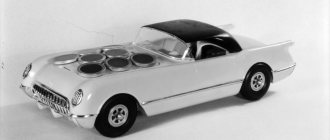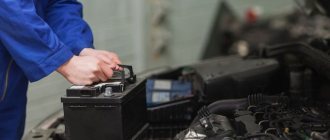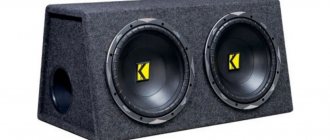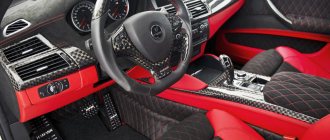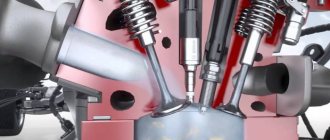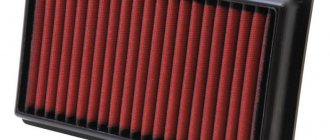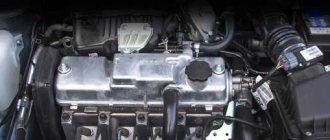Admin Cars Reply to comment
Most Read Posts
- Auto noise reduction (76913)
- Lada Granta “luxury” (49621)
- VOLKSWAGEN POLO HATCHBACK: prestigious purchase (32759)
- Fisker Appoints Ex-Chrysler Executive Tom LaSorda. (24547)
- Running in a new car with automatic transmission. (19286)
- Toyota GT 86 – new coupe (12096)
- Changing the oil in the VAZ 2101—2107 (11515) gearbox
- Download, car agreement, purchase and sale, trust. (10686)
- Honda announced Russian prices for the new Civic 5D (9879)
- Tips for a beginner car painter. (9767)
- Lexus convertible and coupe 2015 (9328)
- The price of the new Peugeot 208 hatchback is from 499,000 rubles. (8491)
- Photoshop lesson No. 4, how to change the color of an object in a photo. (7679)
How to properly break in a new car
In order for the operation of a new car to be long-lasting and enjoyable, after purchase it is necessary to follow special rules for the first few thousand kilometers, allowing the main components and assemblies to go through the grinding-in process, which will ensure reliable service.
Russian roads are far from ideal, so at first you should avoid bumpy or field roads, especially in rainy weather and the off-season, this is a fundamental point.
Preparing to break in a new car
The process of running in a new car consists of several stages, during which it is necessary to observe a special driving regime and perform certain actions. Immediately before running in you must:
- check the engine oil level - it should be between the lower and upper marks on the oil dipstick;
- check the volume of brake and coolant fluids;
- check tire pressure;
- refuel the car with high-quality fuel;
- perform a visual inspection of the main components of the car (engine, gearbox, transmission, chassis components) for the presence of leaks of lubricant or other process fluids.
What is car break-in
Running in a new car is a preliminary period in which driving is carried out exclusively in gentle mode. During this period, the units and connecting units operate in a gentle mode, allowing the mating parts to get used to each other. Another nuance is that the run-in reveals possible manufacturing defects and malfunctions at the initial stage of operation.
The main rule of break-in is uniform, unhurried movement, without sudden changes in engine operating modes, smooth gear shifting, low loads on the engine and transmission.
Rules mandatory for drivers during the break-in period of a new car, performed daily before moving off:
High-quality fuel is the key to a long engine life, so you should only refuel at gas stations with a good reputation.
There is an opinion among car enthusiasts that long-term running-in affects the service life of the transmission and brake system, but in reality this information is not true. The clutch disc will be polished by the drive and driven discs on a new car during the test drive of the car on the circuit after leaving the factory assembly line, the brake pads will be ground in in the first couple of hundred kilometers. After that, with every kilometer of travel, these parts will simply begin to wear out.
How to properly prepare for breaking in a new car
A new car requires particularly careful monitoring of individual elements, since if a possible defect is detected untimely, the consequences will not be very pleasant.
Before starting the break-in, as well as daily during it, you should:
- check the oil level in the internal combustion engine, the working fluid level should be in the middle between the marks;
- check the level of brake and coolant fluids;
- refuel the car with high-quality fuel;
- inspect the engine compartment and bottom, as well as the surface underneath for any smudges.
Is it necessary to break in a new car or not?
A question that cannot be answered unequivocally. Manufacturers of modern cars believe that when running in it is enough to follow two recommendations:
Recommendations are prescribed for the initial section of the journey from 1 to 2 thousand kilometers.
Moreover, these restrictions, according to the manufacturers, are not related to the operation of the engine, but to the need to work on tires and brake pads, and transmission parts. New technologies and high precision engine manufacturing, in their opinion, make it possible to operate the car without additional running-in. Many automobile companies roll in engines when cold, using servos; the duration of such running in varies from 10 minutes to an hour for different models.
To break in or not? Drom.ru explores the rules for running in new car engines
Running in a new car, or more precisely, serious restrictions at the beginning of operation - is this still relevant or is it already an atavism? Every time Drom.ru buys a new car for its blogs, there will definitely be a dozen comments with the question “have you run it in?” Let's look together at this important issue for many motorists.
Today, in the instructions for new cars, only a couple of paragraphs are devoted to running-in, and sometimes just a line of text. What are the requirements for running-in new cars today? We sent inquiries to the official representative offices of automakers in Russia, studied a number of operating instructions, and found electronic manuals for other markets...
And we found out that today running-in has become a rather conventional concept
In most cases, break-in recommendations come down to just two simple rules:
1. Avoid driving at too high speeds and engine speeds.
2. Avoid sudden accelerations and stops.
Also, during the break-in period, automakers advise avoiding increased loads on the vehicle in the form of transporting heavy loads or a large number of passengers, as well as towing trailers or other vehicles and slipping. Sometimes it is recommended to avoid prolonged driving at a constant speed and engine braking. All!
Different companies have these recommendations for different initial mileages - on average from 1000 to 2000 km. Some of these recommendations are related to the running-in of the brake system of a new car (when installing new brake pads, in principle, sharp braking should not be allowed during the first few hundred kilometers), as well as the running-in of tires and transmission elements. But for engines, the vast majority of automakers today do not require running-in, justifying this with the fairly high precision of engine manufacturing, as well as new technologies in their development and manufacture. In addition, many automakers use so-called cold running for new engines - when the assembled engine is forcibly cranked using a servo drive (cold running time can range from one to several tens of minutes).
What requirements do car manufacturers have for running a new car?
Renault recommends, but does not oblige, its customers for the first 1000 km (for some models 2000 km) not to exceed a speed of 130 km/h in top gear, or not to allow the engine to operate above 3000-3500 rpm.
Honda, in the instructions for the new Accord sedan, recommends that during the first 1000 km “do not move with full fuel…”, and also do not tow a trailer and do not change the engine oil before reaching the mileage or the time recommended in the maintenance regulations.
There are no special requirements for Chinese cars (in particular, for Lifan): everything is at the level of general recommendations about limiting maximum speed, engine speed and some others aimed at limiting the load on a new car.
Mitsubishi representative office told us that their cars have no running-in requirements at all!
What about in other countries? In the USA, for example?
, Toyota recommends avoiding sudden stops for the first 200 miles (300 km), and for the first 1,000 miles (1,600 km) not driving at too high speeds, avoiding sudden acceleration, and constantly driving in low gears and at a constant speed. . The last point is interesting because it essentially does not recommend using cruise control on a new car when driving outside the city, although such a ban is not directly stated.
GM provides slightly more detailed recommendations for its Chevrolet Tahoe SUV. In particular, in addition to restrictions on speed and engine speed, as well as warnings about sudden stops or towing trailers, GM advises avoiding engine braking during the first 800 km of the run, and also not pressing the accelerator pedal all the way. But in general, here too they do not impose any special requirements for running in new cars.
And even for the domestic Lada there are no specific requirements for running-in. In particular, during the first 3000 km, it is necessary to control the tightening of the wheel bolts, and also to avoid abrupt starting - including with the handbrake applied (!), and turning around with slipping of the drive wheels. At the same time, VAZ representatives emphasize that these requirements are related exclusively to “the need to break in tires, chassis elements and the braking system. These requirements have nothing to do with the “grinding in” of engine parts, because modern Lada car engines do not require running-in...”
What about break-in oil, or “zero” maintenance for a new car - something that was the norm 20 years ago? We found similar requirements only for Uzbek Daewoo (Nexia and Matiz), as well as some domestic Soviet-designed cars, where during the break-in period it is stated that a special break-in oil must be used, which must be replaced during the first maintenance when the mileage reaches 2000 km.
What is the risk for a car owner if he fails to comply with even such simple rules for “breaking in” a new car? We asked this question to representatives of automakers, as well as employees of technical centers of official dealers. And in fact, all the answers boiled down to one thing - there is no threat! Why? Firstly, it is almost impossible to prove that the engine is not working properly precisely because of violations of the recommendations for running in a new car. True, there is an increased risk of failure of a new engine due to overheating (which is why, in fact, automakers advise to refrain from heavy operating conditions with heavy loads during the first thousand kilometers): unused parts of new engines are more prone to thermal “wedge”. But, secondly, the employees of the technical centers we surveyed could not remember examples of engine failure solely due to improper break-in, since the maximum that can really immediately follow this, according to the experts, is only increased oil consumption.
In other words, the likelihood of killing a new engine by improper break-in is extremely low. And in the long term, too many other factors affect the life of the engine, many of which can kill the engine much faster than improper break-in. In any case, the engine of a modern passenger car expires its warranty mileage (which is 2-3 years of operation and 100 thousand kilometers) even if it is turned to full speed from the very first kilometers of the run - of course, subject to other rules for operating the car (timely and complete maintenance, as well as the use of consumables, lubricants and spare parts that are known to be of high quality and approved by the vehicle manufacturer).
And this is where the Russian specifics of servicing a modern car come into play. Many car owners stop visiting dealership technical centers immediately after the warranty expires. And along with a change in service location, the regulations for the work carried out often change: service intervals change, inappropriate technical fluids are used, savings begin on consumables, on diagnostic and testing operations... But sooner or later all this will definitely affect the engine’s service life and its reliability.
On the other hand, for a modern car, the old principle of garage maintenance also ceases to be possible: some service operations without special equipment either become unreasonably complex or impossible in principle. And here, even the most thorough running-in of a new car will not help extend its life!
A MATTER OF TECHNOLOGY?
The engines of modern passenger cars are literally stuffed with all sorts of electronic systems that not only monitor the condition of the engine, but also control it. And it would be logical to transfer to the electronics the functions of monitoring and controlling the operating modes of the new engine. However, in practice, this control is essentially reduced to only a banal electronic speed limiter, while the official representative offices of automakers could not tell us anything specific about the use of any technical means that limit the operating modes of a new car.
But we still managed to find out something. In particular, for new cars it is practiced to activate the so-called “transport mode”, in which the functionality of the new car is really seriously limited. But this mode is needed exclusively for the period of transportation of a new car from the car factory to the dealership, and it is aimed mainly at maintaining the functionality of the battery (limiting energy consumption). During pre-sale preparation of the car, the transport mode must be disabled (either by special dealer equipment, or by a combination of actions by standard vehicle controls).
How to properly break in an engine
There are 3 engine break-in stages, each of which includes 500 kilometers, and the final fourth, the length of which is the difference between the break-in duration declared by the manufacturer and the mileage of the first three stages.
Run-in step by step:
The break-in mode does not include idling; every driver should remember and know this. Idle speed is permissible during break-in only when the engine warms up for no more than 2-3 minutes. An oil film on engine parts does not form at low engine speeds, so there is a risk of dry friction, leading to premature wear of rubbing parts and a decrease in engine life.
During the running-in stages, engine braking is not possible; this can lead to irreparable consequences.
Engine break-in process
Running in the engine after repair is carried out in several stages, the sequence of which must be strictly followed.
After the first start of the engine, you need to inspect it and make sure that there are no oil and coolant leaks from under the gaskets and connecting pipes. Next, you should make sure that the oil pressure in the engine is normal. Only after this can the power unit be warmed up to the recommended operating temperature. During the warm-up process, inspect the engine for fluid leaks.
As it warms up, the oil pressure will decrease, this is due to the fact that it heats up and becomes less viscous. Normal pressure is considered to be within 0.5-1 kg/cm2. If the pressure parameters do not correspond to the norm, then errors may have been made during engine assembly, a faulty oil pump or low quality oil.
After reaching operating temperature, the engine must be turned off and allowed to cool to thirty degrees. Next, we start the engine again and repeat the procedure. These operations should be performed approximately fifteen times. It is worth noting that the first run-in is carried out only at idle speed.
At the second stage, we adhere to the following parameters: three minutes – 1000 revolutions, four minutes – 1500 revolutions, five minutes – 2000 revolutions.
Transmission break-in stages
No matter what manufacturers say about high precision and new production technologies, a new car is still worth taking care of. Proper running in compliance with the speed limit at all stages will significantly extend the service life of the main units and transmission components.
An automatic transmission in a car is an expensive and complex mechanism. Replacing a box damaged by improper use will cost a good amount, so the following rules should be followed:
Changing the oil will also not be superfluous in order to remove chips or contaminants.
The mechanics are unpretentious in maintenance and have a longer service life than an automatic. But the first few thousand kilometers can increase the service life of the box if the driver is careful and attentive to the car.
Adviсe:
After break-in, it is worth changing the oil to remove any chips that may have formed during the grinding process. This operation will avoid consequences.
Diesel or gasoline engine - are there any differences in running-in?
There are differences, but they are not fundamental. More precisely, running in a diesel engine is carried out according to the same principles as a gasoline engine. The only difference is the longer period. All distances by stage for a diesel engine are multiplied by two.
Does a new car need a break-in or not? Everyone chooses the path for themselves. But a careful attitude and gentle regimes must be strictly observed at first. Running a car in means giving the units and components a chance for a long and healthy life, saving yourself from unnecessary hassle and additional expenses.
Source
Features of proper engine running-in
Let's start with the fact that you should not confuse the concepts of overhaul and engine overhaul. Overhauling involves only certain narrow operations (for example, replacing valve stem seals, piston rings, valves, gaskets, seals, etc.).
A major overhaul means that a complete disassembly, washing, troubleshooting and replacement of all worn-out elements is carried out, as well as adjustment to factory parameters. The list of operations usually includes grinding the crankshaft, replacing pistons and piston rings, boring/lining the block, installing new main and connecting rod bearings, and much more.
Such repairs are expensive and are performed exclusively by specialized specialists. As a result, the owner receives a completely restored engine, which in most respects is close to a new unit.
It becomes clear that both in the case of new and “overhauled” internal combustion engines, the break-in rules will be very similar. The fact is that the installation of new and also restored parts after grinding and surface treatment also requires mandatory grinding in of all elements for normal and smooth operation of the unit under loads.
Adviсe
Do not use engine braking, as the crankshaft has not had time to get used to and may break through the walls of the cylinder block. Which will lead to major repairs from the first days of the car’s life;
If there is no garage, and the car spends the night in an open parking lot, then before each morning start it is necessary to warm up the oil pan with a blowtorch or something similar. Especially when the ambient temperature is 20°C or more. Heating will ensure the fastest possible rise of oil at start-up, which means the parts will be without oil for less time;
It is necessary to switch gears smoothly, without jerking, and this does not depend on the time of year. A clutch impact can damage the synchronizers, which will lead to urgent repairs. For diesel engines, the break-in rules are the same as for gasoline types. The only and main condition is to wait until the glow plug indicator on the instrument panel goes out. Some experts insist that the speed threshold for a diesel engine is slightly reduced, but manufacturers do not provide such information. Whatever the car is, domestic or foreign, do not rush to drive it at first; it is better to drive it gently for 2000 km than to do a sudden overhaul later. If possible, buy a car in the cold season, since running in a new car in winter will be much more effective than in summer. As for other matters, let each owner decide for himself.
Don't drive is the first commandment when breaking in a car.
The main rule that every car enthusiast must follow is that during the break-in process you should never try to “squeeze” all its maximum performance out of a new car. This is due to the fact that even a state-of-the-art engine can fail if it is forced to run at high or low speeds for a long time. In other words, you cannot move at the same speed for a long time. In approximately the first 2000 km, the engine should develop its own dynamics, efficiency and other useful properties. If you “overwork” it by working without changing speeds, all these characteristics will noticeably suffer, and in the future the engine will often require repairs.
In addition, until the 1500-2000 km mark is reached, try to keep the tachometer from spinning more than 3 thousand revolutions, unless this is particularly necessary. At the same time, make sure that the tachometer readings are kept within the range of at least 2 thousand revolutions, since “pulling” a brand new engine is just as undesirable as revving it too much.
Until the car is fully run-in, do not brake the engine!
It is not recommended to move too fast, and also not to change speed for a long time.
Idle speed
Contrary to popular belief among most novice (and not only) car enthusiasts, idling is harmful to the engine . Especially for unheated ones. Although intuitively one might think that since the crankshaft rotates slowly, the other parts feel better, since the load is supposedly minimal.
And idling is harmful for the engine because at low speeds the lubrication system does not work properly. Firstly, the pressure necessary to deliver engine oil to the upper components, in particular to the gas distribution mechanism, is not created. As a result, these parts rub against each other through a thin or completely absent oil film, which in itself has a detrimental effect on the service life. And during break-in, such “oil starvation” also leads to excessive overheating.
Secondly, during engine operation, so-called oil mist is created in the lower part of the engine. It occurs due to centrifugal force, that is, oil flies in all directions from the rotating crankshaft. Accordingly, when it rotates relatively slowly at idle, the oil mist is not so dense, and in winter it may be completely absent.
If during the break-in process the engine idles for a long time, then one of the conditions for this event is not met. Without proper lubrication, new parts grind in too quickly, and due to a sharp increase in temperature, they also grind in incorrectly.
To avoid this, cars are equipped with a mode where slightly higher speeds are automatically maintained when cold. As for operating an already warmed-up engine, you should try to keep it at idle speed as little as possible. In addition, when the car is stationary and the radiator is not blown by the oncoming air flow, there is a risk of the engine critically overheating.
Absolutely the same applies to driving at low revs. Yes, to some extent this allows you to constantly save a little fuel. But in practice, due to increased wear as a result of oil starvation, repair costs will significantly exceed the amount saved on gasoline.
High revs are another problem. When the engine is operated for a long time at high speeds, the rubbing parts quickly overheat. At the same time, the heating that occurs at this moment in the cylinders cannot be tracked on the dashboard. The temperature displayed here is the coolant temperature. But there are no parts rubbing at the moment.
As a result, it turns out that during the running-in of the car it is necessary to avoid prolonged operation of the engine at idle, low and high speeds.
Stages of running in a car speed limit
When running in a new car, the main attention should be paid to its engine, since this is the unit where there is really something to grind in. The process of running in the engine on a new car is better divided into several stages.
The first stage should have a length of about 500 kilometers. It is recommended to move extremely evenly, thereby ensuring minimal load on the transmission and engine. This will not be difficult - just go out of town: the first 50 km must be covered at a speed of 40-50 km/h in third gear, then increase to a speed of 60-70 km/h and, raising the gear to fourth gear, drive in this mode another 100-150 kilometers.
Every new 100 kilometers on the car’s speedometer, it is recommended to increase the car’s speed by 10 km/h, while continuing to move in fourth gear. By the end of the trip, the speed should be 90-100 km/h. During this period, uphill driving, as well as aggressive acceleration, should be avoided. In cases where this is not possible, it is necessary to gradually reduce the speed and engage a lower gear - it will be much easier for the car to cope with the load.
At the second stage of running-in the car, it is also expected to cover another 500 kilometers, most of which it is advisable to cover exclusively in fifth gear with a maximum speed of 100-120 km/h, raising the maximum speed bar to 3,000 rpm. But you should still beware of long and steep climbs; you should use third or fourth gear to overcome them. The third stage and the next 500 km of driving is also undesirable to use fifth gear for driving uphill, but it is recommended to increase the speed during acceleration to 3,500 rpm. Accordingly, at this stage of running in the car, the maximum speed can be increased and will be 130-140 km/h, but engine braking should be abandoned at these three stages. At the fourth and final stage, the car will cover 2,000 kilometers and allow itself much more. Not very steep climbs can be easily overcome already in fifth gear, but it is worth making sure that the car’s speed at this time continues to remain at approximately 100-110 km/h. In fifth gear you can move at a speed of 80-90 km/h on flat areas. When changing gears and accelerating from traffic lights, the engine can be revved to a maximum of 4,000 rpm.
For some reason, many drivers mistakenly attribute the operation of the unit at idle speed to a gentle mode, and this is actually not the case. The formation of a protective oil film, which reliably prevents rubbing engine parts from dry friction, is possible only under conditions of a normal level of oil pressure, which, in turn, is possible only when the engine speed is 1,200 rpm and above.
Based on this, idling is permissible only when warming up the power unit, which should not last long and take no more than two to three minutes, since running the engine at idle the rest of the time can lead to insufficient lubrication, which can cause premature wear of the rubbing pairs and reducing oil pressure.
Important! Before running in, it is not recommended to change the engine oil that was filled at the manufacturer's factory, however, after all the test tests are completed, it is recommended to definitely change the used engine oil from the engine
The benefits of running a car
Running in a new car: how many kilometers do manufacturers recommend driving so that all components and parts get used to it and all systems begin to work harmoniously. Modern cars have a more advanced mechanism, and some sales managers say that the engine was cold run-in at the factory, and it was only earlier, during the Soviet era, that mandatory running-in of the car was required. But you shouldn’t believe this marketing ploy and deny the experience of our fathers and grandfathers - it happens that it can be useful in modern conditions. The trouble-free operation of the new car will largely depend on whether the new car has been properly run-in.
So, we have finally convinced you that running in cars is absolutely necessary. A gentle driving mode will allow you to painlessly get used to the main components and identify existing defects before they cause an accident or serious repairs when something may jam in the car. During break-in, the process of grinding in gears, oil seals, transmission system, brakes, gearbox, suspension, and chassis takes place.
To bring a machine into a functional state, it is important to subject it to testing. For this purpose, it is recommended to carry out a break-in. During this process the following results can be achieved:
- smooth out all existing flaws and roughness of individual parts and assemblies;
- achieve grinding in of the moving elements of most units;
- clean the engine and lubrication system from various elements of chips and dirt after factory assembly;
- get the brake pads ground in;
- identify defects and manufacturing defects.
But violating the rules for running in a new car can lead to undesirable consequences. But you can definitely get a guarantee that a steel horse will serve for a long time and faithfully. For everything to go well, it is important to follow the break-in rules:
- check the engine oil level (a mark on half the dipstick is enough);
- check the presence of brake mixture and coolant;
- refuel the car with high-quality fuel;
- check tire pressure;
- check for various lubricant leaks.
When a new car is being run-in, you should not time it - pay attention to its length. Many motorists ask themselves the question “When a new car is being run in, how many kilometers do you need to drive?” On average, this should be at least 3 thousand km. But for each brand of car, the mileage will be individual - from 1 to 5 thousand kilometers. In many ways, everything will depend on the type of engine - for a diesel engine, the recommended mileage should be multiplied by two.
There are certain recommendations on how to properly break in a car with a manual transmission:
- it needs to accelerate smoothly;
- switch to low gears in a timely manner to avoid unnecessary loads;
- do not allow idling;
- do not allow the shaft rotation speed to be exceeded when starting the engine;
- move at speeds up to 90 km/h for the first thousand kilometers;
- do not engage 4-6 gears;
- You can’t drive for a long time at one speed;
- for gasoline engines move at speeds up to 3 thousand revolutions per minute. For diesel engines - up to 1.2-5 thousand rpm;
- change speeds in a timely manner.
Experts advise not to practice an aggressive driving style during the break-in period, sharp braking, and especially not driving uphill and towing.
To prevent brake pads from wearing out, you need to brake smoothly. In any case, the driving technique must correspond to the road surface - on dirt roads it can be one way, on highways it can be another. It is better if the new car is tested on roads with low traffic flow and excellent surfaces. On difficult sections of the road, it is worth reducing the gear speed to prevent overloading the engine.
In the engine of a car being run-in, after testing, it is worth changing the engine oil - all kinds of metal particles can collect there (you should not drain the manufacturer’s oil before running-in).
In this case, the recommendations are identical to the advice regarding running in a unit equipped with a manual transmission. But there are still a few differences. This:
- It is recommended to warm up the gearbox well before starting in order to achieve the proper consistency of the gear oil;
- monitor the oil pressure to prevent it from heating up and putting pressure on the planetary mechanism;
- do not spin the wheels;
- for testing, you should not choose city streets where the traffic is unstable - there may be braking and changes, which always has a bad effect on the operation of the “automatic”;
- Heavy luggage cannot be transported during this period.
And in this case, after running in, it is worth changing the oil. Particular attention should be paid to the transmission. After the run-in has been completed, it is worth visiting a service station to undergo a technical inspection and identify possible flaws. It happens that quite a lot of them are found and it is important to remove them in a timely manner. Running in the engine of a new car should not take place under heavy loads. Engine braking must not be carried out - such a test may adversely affect the operation of the main components of the machine.
There are different recommendations for speed limits and speed selection for gasoline and diesel engines.
For the former, the optimal option is 90 km/h and not less than 3.3 -3.5 thousand rpm. For a diesel engine, the first fifteen hundred kilometers should be driven at speeds of at least 2500 (not higher than 1200). Idle speed is not the best option. When the car is warming up, it is important to maintain a level of 1200 rpm.
In addition to the fact that during the running-in process the engine is running, parts of the transmission and brake system mechanisms, including pads, are also ground in (sometimes this process is accompanied by a certain noise). By correctly switching gearbox speeds, you can achieve grinding in of the friction linings of the transmission system. It’s not for nothing that they say that every car loves caress, care and lubrication. Happy journey with a technically sound car!
Now let's move from fantasy to real facts.
Today, it is widely believed that the technical potential of the products of major automakers is of such high quality and high that modern models do not need to be run-in at all and are ready for full operation from the first kilometers. There may be some technological basis behind this opinion. Moreover, a car that reached its maximum speed at the 10th kilometer is unlikely to stop in the middle of the route with a jammed engine.
But here is the time to look at the “manual”1 and read about the permissible speeds for the first 3,000 km. And all these restrictions were invented for a reason. So, contrary to popular belief, the engine of a new car should not be brought into active “life” through prolonged operation at high speeds. The problem is that when the engine is run in like this, the elements grind in. As a result, when such a power unit begins to operate in normal mode, it undergoes secondary running-in (and, of course, repeated wear) taking into account the changed conditions.
Basic rules for running in
The question arises, how exactly to break in a new car. There are basic rules for performing the procedure, but before you begin, it is necessary to carry out preparatory work, which will allow you to properly break in the car.
Preparing the vehicle for running in:
Professionals divide the entire break-in process into several stages. The first 200–300 km are considered the most important. During this period, moving parts are ground in. Violation of vehicle operation standards during this period of the process may subsequently lead to the failure of many parts. It is strictly not recommended to check the dynamic capabilities of a new car at the beginning of the run-in.
Regardless of what gearbox the car is equipped with, the first 50 km. It is better to drive at a speed not exceeding 50 km/h. The best place for this trip is a country road where it is possible to maintain a stable speed. Over the next 100 km. it is possible to increase speed up to 90 km/h. You should refrain from driving at a constant speed without changing its performance. Shifting the speed lever should be smooth.
Rules for running in a new car with manual transmission
To achieve maximum efficiency when running in a new car with a manual transmission, it is recommended to rely on the following rules:
Do not practice a sharp fast start. When starting the engine, high crankshaft rotation speeds are not allowed. Smoothly pick up speed. Shift to low gears in a timely manner. Eliminate the possibility of operating the engine in idle mode. At the first stage of running-in (up to 1000 km), it is prohibited to use 4th, 5th and 6th gears
The speed of a new car should not exceed 90 km/h. It is necessary to take into account that during the break-in the driving speed should change periodically. For gasoline engines, the maximum speed should not exceed 3000 rpm. For engines operating on diesel fuel, the permissible speed is up to 5000 rpm. At the first stage of running-in, it is better not to use jerks, sudden accelerations and braking, and you should also avoid going uphill at high speed. You need to use a calm driving style. The correct choice of route for this procedure will protect the chassis system and engine from overloads.
It is better to choose an area without any imperfections in the road surface.
After completing the procedure, it will be correct to change the oil in the engine compartment, since it is possible that metal shavings, dust and factory debris may get into it. There is no oil change before running in.
Running in a car equipped with an automatic transmission
Running in a new car equipped with an automatic transmission is carried out according to an algorithm similar to the formula for running in cars with a manual transmission. Just a few rules distinguish the processes:
The need for a break-in procedure is obvious, although not all defects can be identified at the time of the initial run. It is quite difficult to identify manufacturing defects, even after conducting in-depth diagnostics. If you do not set yourself the goal of finding shortcomings, you should remember the main purpose of running in, which is to accelerate components and grind in parts.
Rules for breaking in a new car
In order to carry out this process correctly, you need to follow the following recommendations:
- the first thousand kilometers are driven at a speed not exceeding 90 km/h, and it is not recommended to use the highest gear (fourth, fifth or sixth);
- engine speed throughout the entire break-in period should not exceed 3000 rpm (for gasoline engines), for diesel engines - be in the range from 1200 to 2500 rpm;
- do not allow the engine to idle for long periods of time;
- timely and smoothly switch to the appropriate higher or lower gear: a table with the maximum permissible speed for each specific gear is given in the vehicle’s operating manual;
- You cannot practice an aggressive driving style with sudden acceleration and emergency braking;
- avoid excessive load on the car (towing a trailer and other vehicles, long-term downhill driving);
- It is advisable to carry out the running-in on highways with smooth and high-quality surfaces, and avoid long drives in the urban traffic cycle.
Why is a car run-in necessary?
Cold running-in of the engine is carried out at the factory.
Any car needs running-in - this is an axiom that does not require proof. There is an opinion that expensive modern cars do not need to be broken in, because... On the territory of manufacturing plants, all new vehicles undergo a so-called “cold” run-in. In fact, this is not so, because the point of a “cold” run-in is to identify and eliminate various problems in the components and assemblies of new cars. We can say that this is the so-called pre-sale preparation of the car.
Deprived of proper “hot” running-in, machine components and assemblies are subjected to high external loads, which significantly shorten the service life of parts that have not yet had time to get used to each other. On top of that, for cars that have not been run-in, the consumption of oil and fuel mixture increases significantly.
Finishing touches
The logical conclusion of a successful break-in of a new car should be zero maintenance (you should find out in advance from the direct seller about the recommended mileage of your car). This procedure is not at all a waste of money. No one can diagnose a car and all its parts as effectively as professional technicians. Their services additionally include checking all fluids. To avoid engine damage, experts advise changing the oil after the break-in period.
Do you want to properly and effectively break in your car? Don't ignore the advice of professionals! Their recommendations will allow you to most successfully develop all the car parts that will please you with the characteristics inherent in them.
All tips regarding breaking in a new car can also be successfully applied to the procedure for breaking in a car after a major overhaul. The lack of professionalism of the workers involved in repairing your car can be effectively compensated for by driving in a gentle mode.
We'll tell you what breaking in a car is and how to properly break in a new car engine, which is worth remembering.
Running in a car has been a forgotten concept since the times of the USSR. At the same time, technical books indicated the rules for correct running-in and the number of required revolutions. But that's all in the past. Now we are in the 21st century, which means that the automotive industry is not “standing still.”
Why is it necessary to break in the engine?
All moving parts of the engine mechanisms need to be broken in, which is precisely why running in a car engine is necessary. Most of the power unit parts are made by casting and turning, and even if the production technology is maintained with one hundred percent accuracy, their surfaces still cannot be perfectly smooth.
So, at the moment of grinding in engine parts, their surfaces come into contact with each other, and thus they break in. At this moment, the parts are subjected to high temperature and physical stress, therefore, in order to avoid damage to them, it is necessary to observe the technological running-in regime. An engine that has been run-in with all the requirements of the run-in standards has a longer service life and power characteristics than an engine that has not been run-in correctly.
To break in a car or not, all the pros and cons
The machine is run in in a gentle manner, which cannot in any way worsen the condition of the components and parts. The opponents of running-in are mainly representatives of manufacturers, stating that modern cars do not require any restrictions in operation from the first kilometers, and all the necessary procedures were carried out at the factory (cold running-in).
Many manufacturers indicate certain restrictions on the operation of a new car; a number of them recommend undergoing zero maintenance.
What does running a car give you:
The break-in period is measured in kilometers and ranges from 1000 to 5000 km depending on the manufacturer, and it is recommended to break in a diesel engine twice as much as a gasoline engine.
Changing the oil after engine overhaul
It should be understood that the obligatory result of grinding in parts (especially in the first hundreds of kilometers) in the engine is metal shavings. These chips enter the engine oil and accumulate in the oil filter. It is quite obvious that these chips need to be removed from the internal combustion engine.
This can be done by draining the lubricant and replacing the filter. This replacement needs to be done after 800-1000 km. By the way, you only need to fill it with suitable high-quality motor oil immediately after repairing the engine, before the first start, during the first replacement and further during operation.
This means that you need to use the material recommended by the engine manufacturer. The lubricant must comply with all API and ACE standards, requirements and tolerances, and also be suitable for SAE viscosity, taking into account seasonality and other regional characteristics.
It is also necessary to separately take into account that after boring the cylinder block to repair dimensions for repair pistons, in some cases experts recommend using a more viscous oil compared to that which is poured into a similar new engine.
Now about the driving style during break-in
If you have a used car in your hands, and when the mileage shows three to five thousand kilometers on the meter, then this is the first sign that you need to change filters, engine oil and conduct a full technical inspection. But, if the inspection did not reveal any deviations or breakdowns, then we can safely say that the car has been run-in.
As for used cars, it’s worth taking a closer look and listening to the engine and chassis during break-in, if they were taken from hands you don’t know. Such a car is much better in its operating and technical characteristics than a new one. The engine uses less fuel and oil during operation than a completely new one, it responds faster to the gas pedal, but it’s still better to check the oil level more often and take a closer look at the operation of the piston and valves, so it’s worth running in a new engine in your own way.
Source
Driving style during run-in
The first rule of the driver: sudden pressing of the gas pedal or brake pedal is strictly prohibited. Such a scenario puts maximum load on the car’s engine, subjecting not only the brake system, but also the chassis to extreme overloads.
You should also avoid driving under load:
- high revs in low gears,
- clutch delay,
- transportation of heavy containers.
On frosty days, it is recommended to warm up the car engine to the required temperature, and only then start driving. Any movement of the vehicle being driven in must take place on a flat road, avoiding country and broken roads.
When purchasing a used car, the odometer of which shows mileage numbers of 5-7,000, the first sign is that it has undergone a full technical inspection, with further replacement of filters and lubricants. If the completed maintenance did not reveal any deviations in the vehicle’s operation, we can safely say that the run-in was completed correctly.
When running a used car, you should pay close attention to the operation of the main components, provided that the “iron horse” was purchased from complete strangers. As a rule, a given car will be technically superior to a new car, due to partial running-in.
